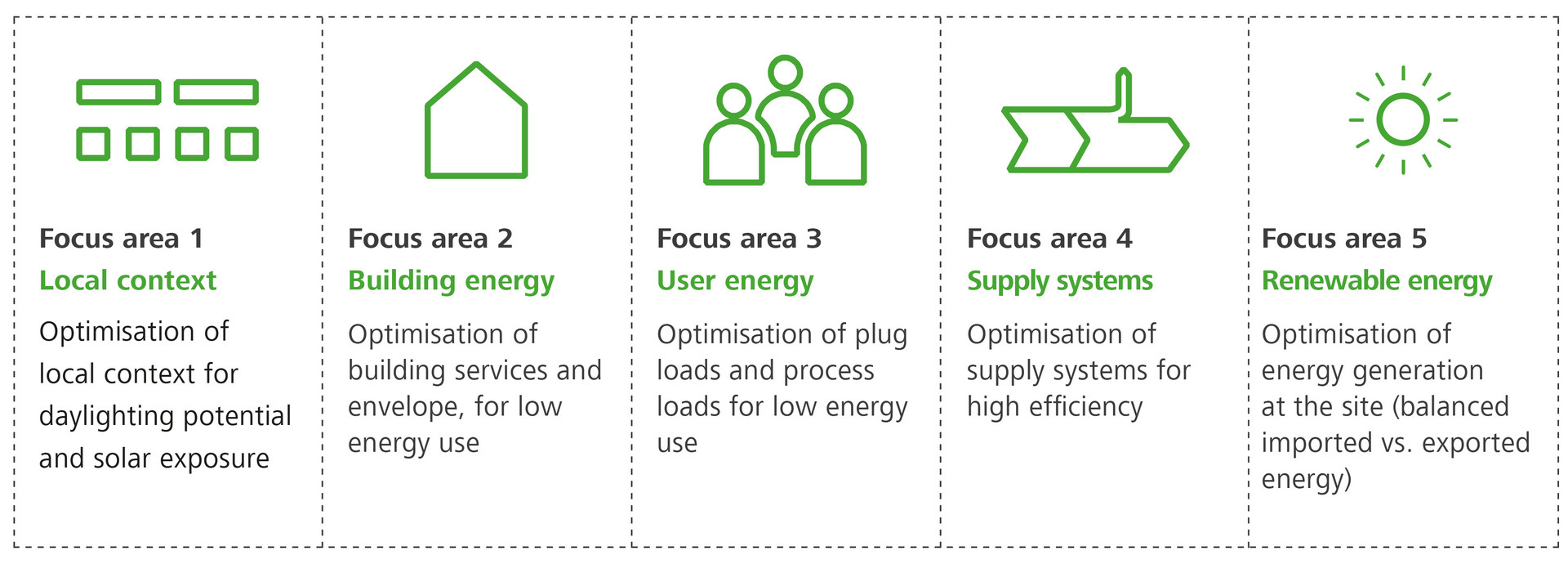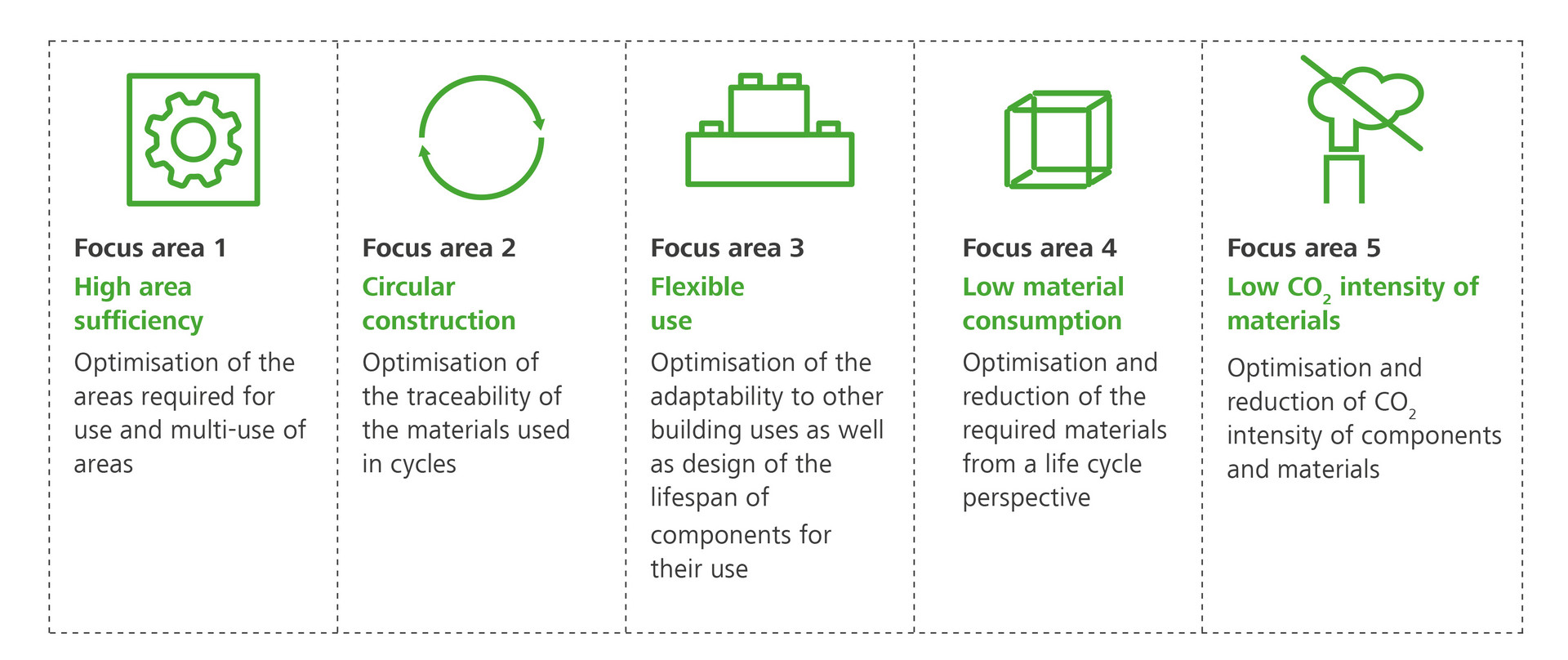If we are to make fundamental changes by 2045, we need to start now. A reliable framework that provides guidance on how to continuously reduce CO2 emissions to the required level is essential. For this reason, the DGNB has developed a framework for carbon neutral buildings and sites that will make it possible to decarbonise the building stock by 2045. Four basic elements of a climate action strategy are addressed:
Part 1: CO2 accounting for status assessment
On the basis of the measured consumption data, the building-specific CO2 balance must be determined annually. This enables an assessment of whether building operation has been implemented as planned or whether and where action is required.
Part 2: Climate Action Roadmap
Climate action must be planned. Only those who define clear objectives for their buildings, sustain these and thereby also implement measures in a future-orientated manner can optimally combine climate action and economic efficiency.
Part 3: CO2 reporting
Companies are responsible for disclosing their activities and decisions in the context of sustainability and climate action. Transparent communication of the actual CO2 emissions resulting from their own activities, including the consumption of their own building, is absolutely desirable.
Part 4: Quality assurance and verification
High building quality and recording the CO2 emissions caused by the building are an important basis for any climate action strategy. Independent quality assurance is essential in order to be able to verify the effectiveness of the implemented climate action measures.
Framework for carbon neutral buildings and sites
Fields of action
In order to make our buildings carbon neutral, we have to take into account the overarching interrelationships. What we need is a sensible systematic approach. Every decision and measure must be assessed according to the following aspects
and orientated towards these:
1. Minimisation of the total energy consumption
2. Efficient energy generation
3. Selecting energy sources with the lowest possible CO2 intensity
The optimisation of buildings towards carbon neutrality is not finally completed once these fields of action have been dealt with. Ongoing active efforts must be made to ensure that buildings and building operations remain carbon neutral. Continuous monitoring and regular assessments are necessary.
Back to the toolbox "carbon neutral building"


